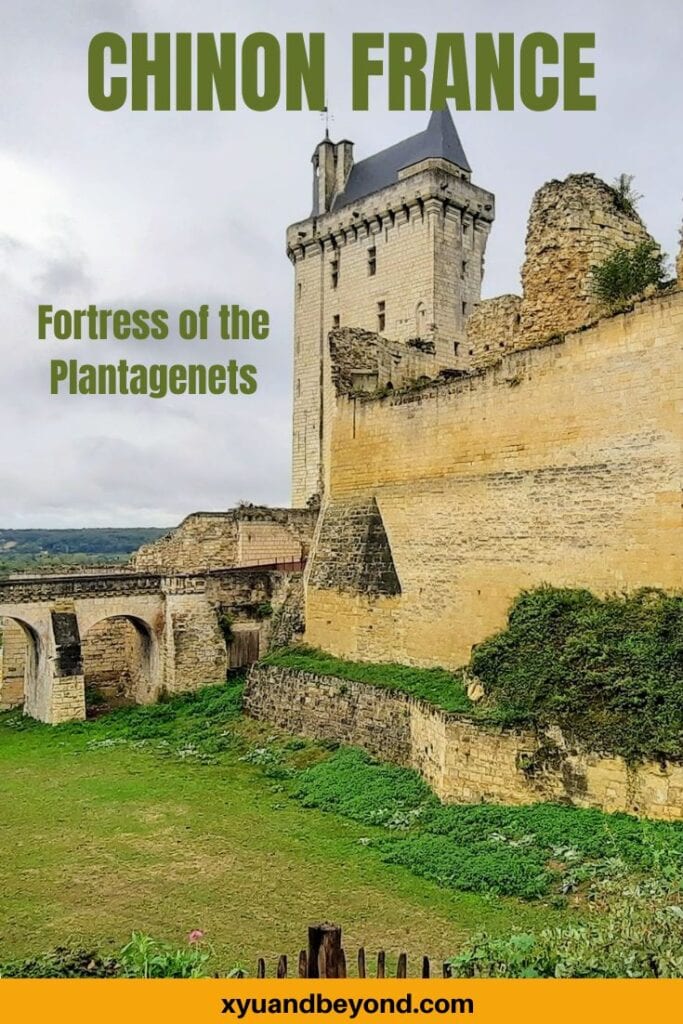Chinon France: A Royal Fortress and a medieval city
Chinon France is steeped in history it was the favourite town of the Plantagenets and Henry II, one of the great English Plantagenet kings, and his wife Eleanor of Aquitaine lived here and used the Chinon Castle as their home. Henry II died here in 1189 and their son, Richard The Lionheart was born here at Chateau de Chinon (or so say the French).
In Chinon, the winding cobblestone streets meander up to the castle and are lined with small shops, inns, and cafes. The cobbles and timber houses date back to the fifteenth century. Chinon was registered as a preservation area in 1968 and since then has undergone continuous restoration work to preserve its historic and architectural identity.
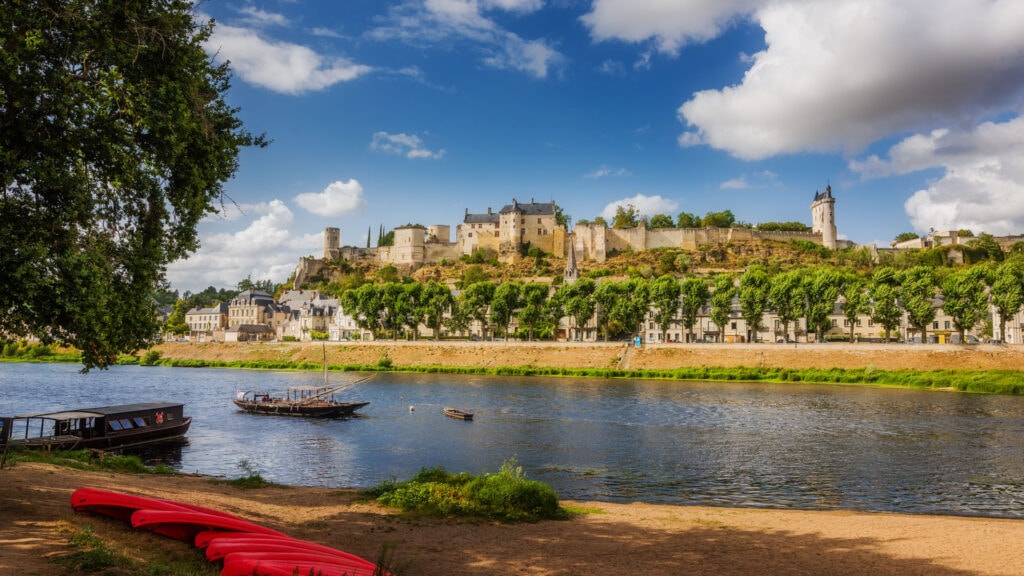
Where is Chinon in France?
The medieval town of Chinon is located in the province of Touraine within the Loire Valley region of France and one of many gorgeous Chateaux. A strategic location in the middle ages Chinon was home to both English and French Kings and Queens. Chinon is known for its wines, castle, and historic town. Its area of the Loire Valley has been registered as a UNESCO World Heritage Site since 2000.
The town rests on the banks of the Vienne River before it meets the Loire. The traditional province around Chinon, Touraine, was a favourite location for Kings and nobles in the late 15th and early 16th centuries. They built incredible Renaissance châteaux on the foundations of the old forts and stone castles in the Loire Valley which had earned the nickname “The Garden of France.”
The ancient Royal Fortress of Chinon sits high on a rocky outcrop on the North Bank of the Vienne with the medieval town sitting at its feet.
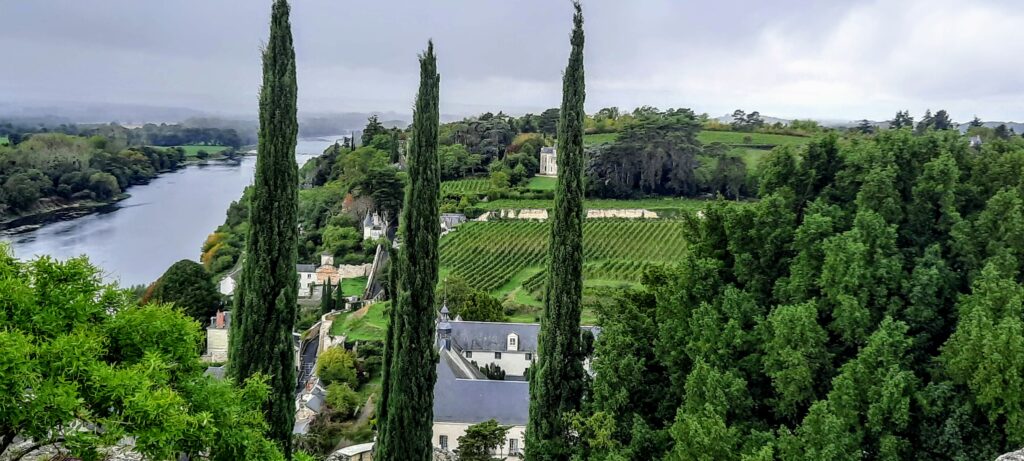
Chinon France – The Royal Fortress of Chinon
Château-Chinon this is not a fairytale castle this is a medieval fortress and it was never transformed into a Renaissance building. This is a fortress in France with a fascinating and rich history which served a major role in the futures of both England and France during the middle ages. This was the heart of Plantagenet France.
The site was a Roman fort back in the 5th century but by the 10th century it became a fortress built by the Count of Blois, Theobald I fortified it and used it as his stronghold.
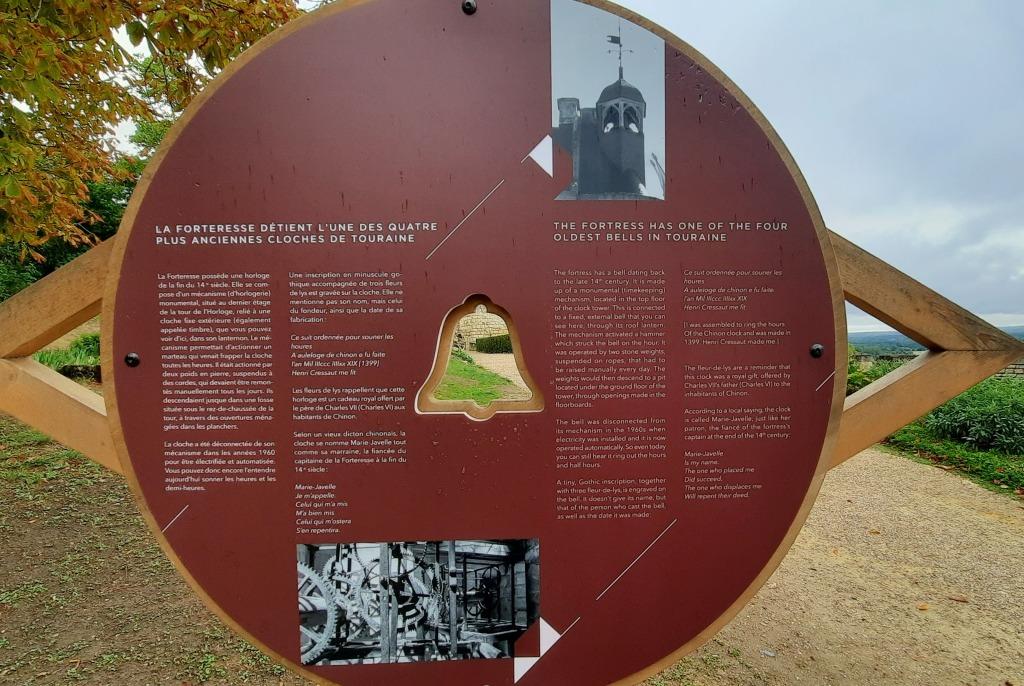
In 1016 Chinon Castle was owned by Odo II of Blois who was determined to annex many of the counties of the Touraine. As a result, there were many battles fought to stop him including the Battle of Pontlevoy which was fought in 1016 between the forces of Fulk III of Anjou and Herbert I of Maine on one side and Odo II which became one of the largest battles of medieval France and determined the balance of power for years to come.
In 1017 Odo was killed and the Fortress of Chinon through several battles was captured by Geoffrey of Anjou from that time until the 13th century it was his heirs, the Counts of Anjou, who inherited Chateau Chinon.
Henry II Castle
In 1154 Henry II Count of Anjou inherited the English throne through his mother Queen Maude.
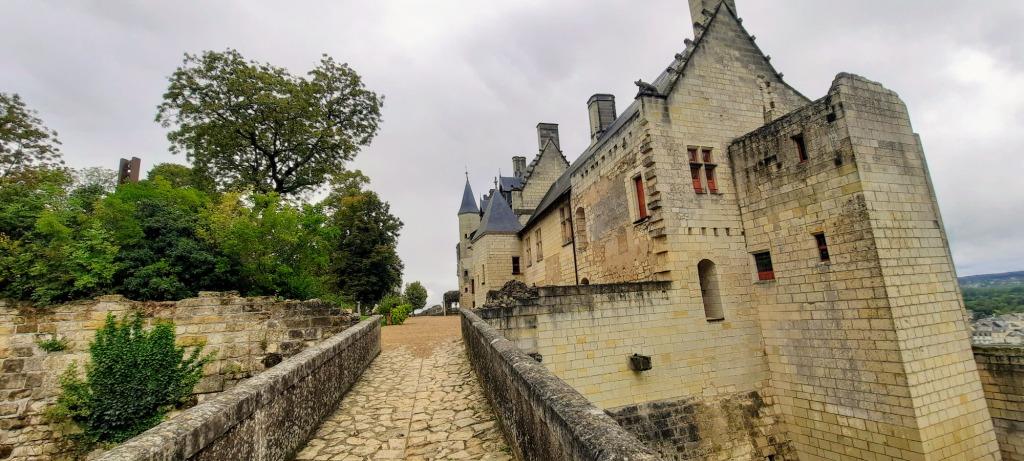
After many battles against King Stephen to reclaim the crown. 1156 Henry took the castle from his brother Geoffrey after he had rebelled for a second time. Henry used Chateau de Chinon as his home base and much of the structure is attributed to him. He commissioned extensive building efforts at Chinon including the construction of Fort Saint George, which served as the location for his administration and government-related functions.
King Henry II had a very contentious relationship with his sons and there were many years of conflict between them. In 1173 Henry had promised his son John that when he married he would be given Chinon, Loudun and Mireabeau. However, his oldest son Henry III had no land of his own and this made him very angry he claimed he had the support of King Louis VII of France and the English Barons to obtain the land promised to him.
Eleanor of Aquitaine castle
At that time Henry II heard that his wife Eleanor of Aquitaine and his sons were involved in a conspiracy to overthrow him. Eleanor was imprisoned at Chinon as a result of the conspiracy and then sent to England where she was under house arrest for 15 years. In 1204, she died at the Abbey of Fontevraud at the age of eighty and her tomb can still be seen there next to that of her husband.
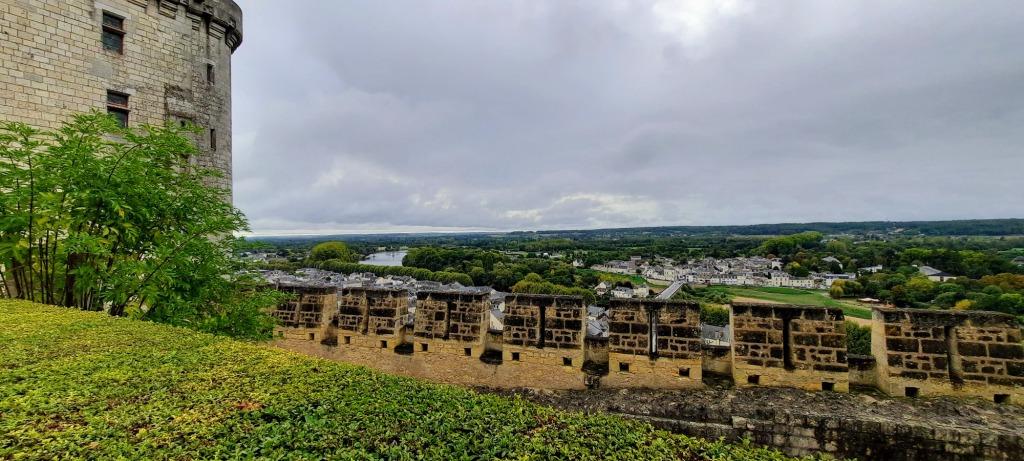
By 1187 young Henry was dead, and Richard (Lionheart) was in line to inherit, and Henry II was on the brink of war with King Philip II of France. In June of that year, Richard travelled to Paris with Philip II and struck up a friendship with the French king. King Henry was rightfully concerned that Richard and Phillip would turn against him so he asked Richard to return. Richard did but returned to Chinon and stole the money in the treasury to repair his castles in Aquitaine.
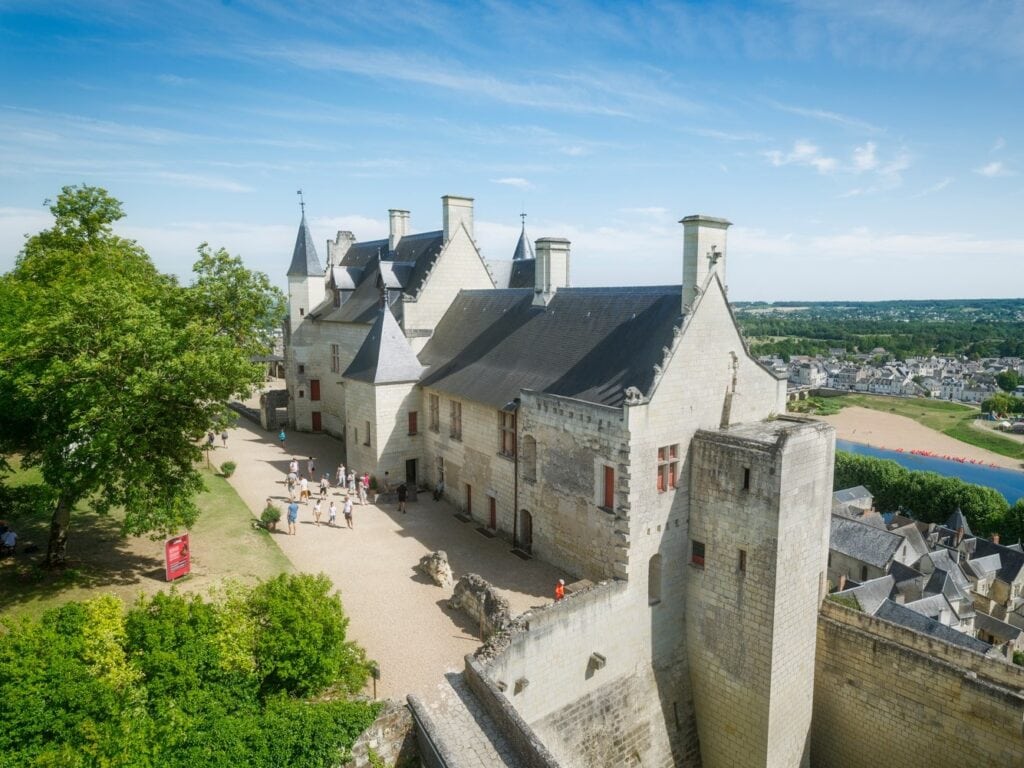
With the young Henry’s death, Richard now stood to inherit England but his father wanted to ensure that John his brother was equally compensated and decided to change the inheritance of the Aquitaine to John. Richard who was now the Duke of Aquitaine refused to concede the territory. His brothers gained the permission of their father to invade his lands to try to take them back and the fighting continued.
Henry made Richard’s inheritance of England official in July 1189. It followed the defeat of Henry’s army by a force led by Richard and Philip of France. Henry died just two days after making this agreement at Castle Chinon.

The king’s body was taken to Fontevraud Abbey and Richard Coeur de Lion (the Lionheart) became king.
In 1191 the King of France Phillipe was planning a Crusade to the holy lands and Richard having formed an alliance with him went on the Crusade. When he returned from the Crusades Richard was taken prisoner by the Emperor of Germany.
While Richard was imprisoned and awaiting payment of the ransom his brother John occupied Windsor Castle and prepared an invasion of England by Flemish mercenaries.
The King of France took advantage of this and attacked Richard’s lands of Normandy, Maine, Anjou and Poitou. Eleanor of Aquitaine raised the considerable sums needed to free Richard and once the ransom was paid Richard was released.
In 1199, Richard was wounded during the siege of Chalus when he was struck in the neck by an arrow. The wound became infected and Richard died without an heir. His mother Eleanor buried him at Fontevraud with his father but his heart was buried in Rouen.
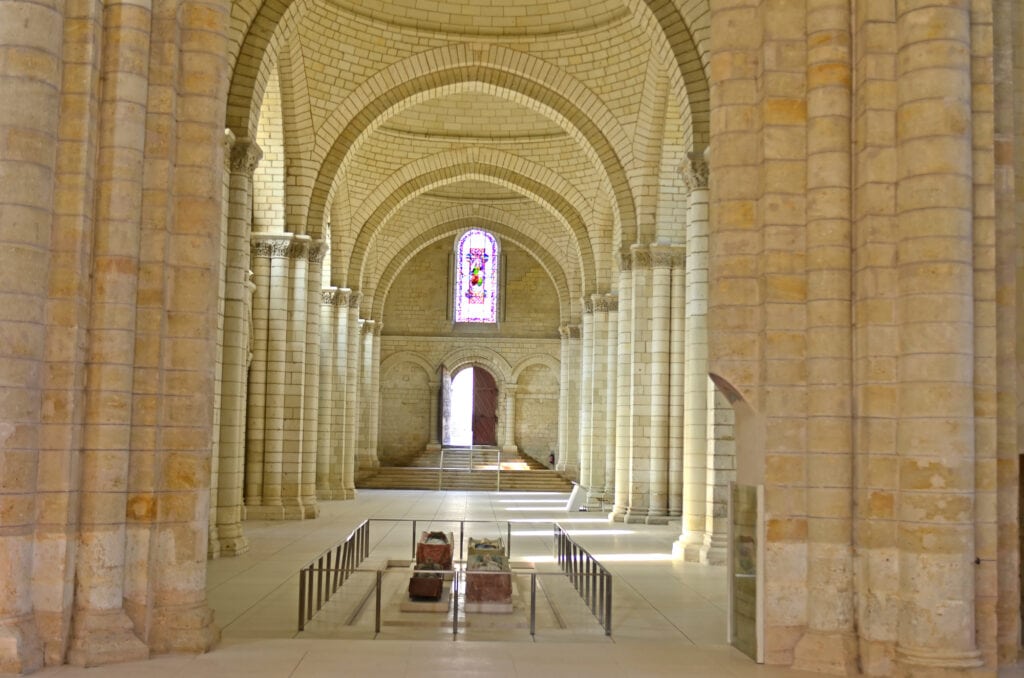
Chinon was then inherited by Richard’s brother John and from 1200 to 1202 John made many improvements to the Fortress of Chinon. John married Isabella of Angouleme who was a cousin of the King of France and married her at Chinon.
This did not please the King of France as Isabella had been promised to Hugh de Lusignan and as a result, the King of France went to war with John. In June 1205, Chinon was retaken by Philippe while John was away in England. John returned to Chinon in 1214 to sign a truce with Philippe.

In 1308 the Fortress of Chinon was used to imprison the Templars – Crusaders of the Order of the Temple after the King of France wanted to remove their influence from the country and take their massive wealth for his own.
In 1419 when the King of France, Charles VI, disinherited his son, Dauphin Charles the Dauphin moved to the Fortress of Chinon and in 1427 his court was held there.
Joan of Arc at Chinon
Everybody has heard of Joan of Arc France’s national heroine who claimed to have been visited by the Archangel Michael who told her that she must “drive the English out of France.”
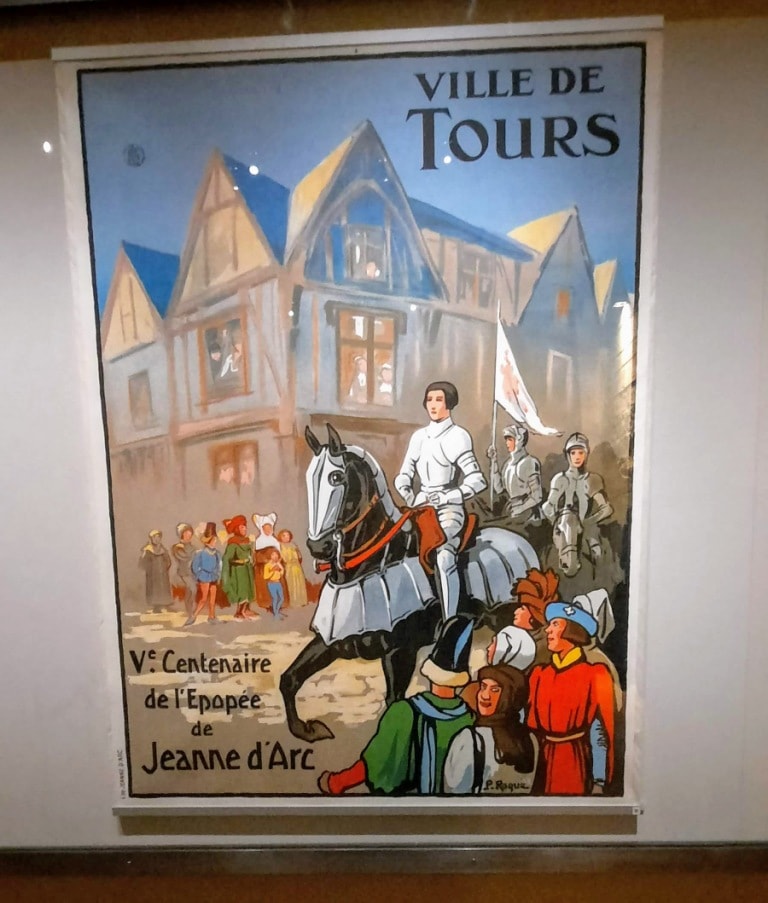
So on February 13, 1429, Joan of Arc and her small military escort set out from Vaucouleurs to travel to Chinon to meet the Dauphin. Joan had begun wearing men’s clothes to make herself less conspicuous as she travelled through English-controlled territory.
Following these divine words, Joan of Arc went to Chinon after her 17th birthday to meet with the Dauphin where she convinced the prince that she could rescue Orléans from the English invasion during the Hundred Year’s War.
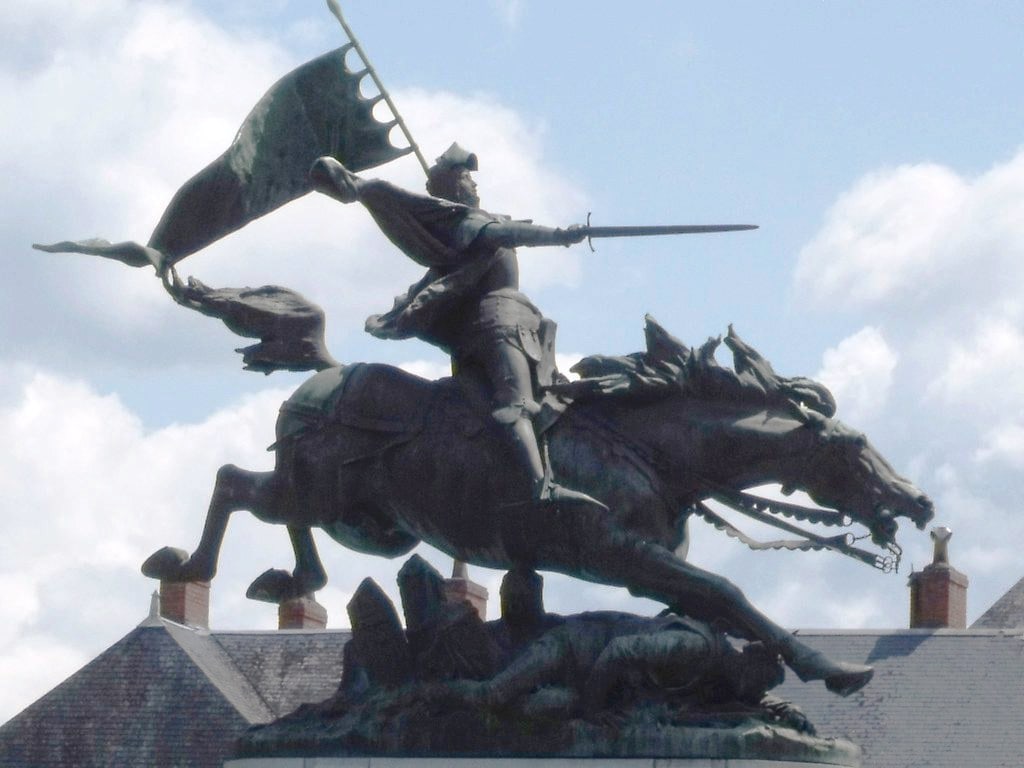
Joan then left the Dauphin to join the army gathered in Blois ready to march on Orleans. In May of the same year, Joan of Arc delivered Orleans from the English and on 17th July 1429, Charles VII was crowned king of France in Reims beside the Maid of Orleans and her proud banner.
You may follow Joan of Arc’s footsteps in the old city of Chinon, and even find the ancient well that she used to step onto when she got off her horse.
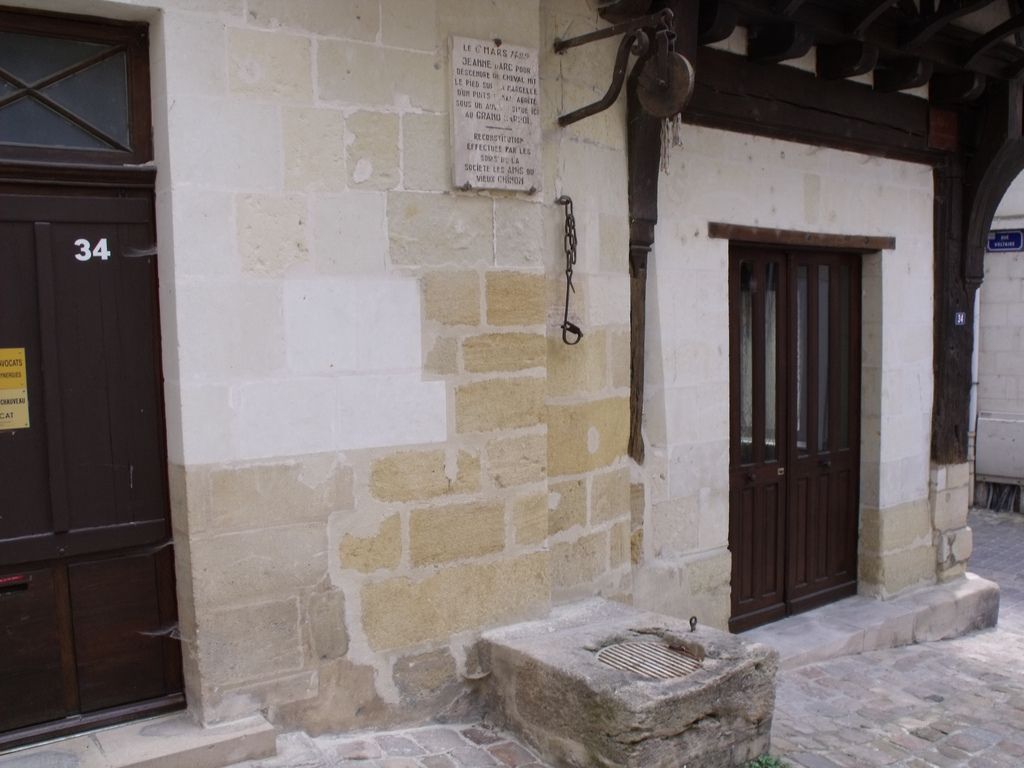
As Joan predicted the French did win in 1428 but tragedy awaited her when she was captured and sold to the English in 1430. The English accused her of witchcraft and she was burned at the state in Rouen Normandy when she was only 19 years old.
Joan of Arc was formally canonized as a saint of the Roman Catholic Church on 16 May 1920 by Pope Benedict XV in his bull Divina disponente.

By the second half of the 17th century, Château de Chinon had become a prison and when it fell out of use it was left to ruin. It was recognized as a monument historique by the French Ministry of Culture in 1840. The castle, which contains a museum, is now owned and managed by the Indre-et-Loire General Council and is a major tourist attraction. It was restored in the early 21st century, at a cost of €14.5 million.
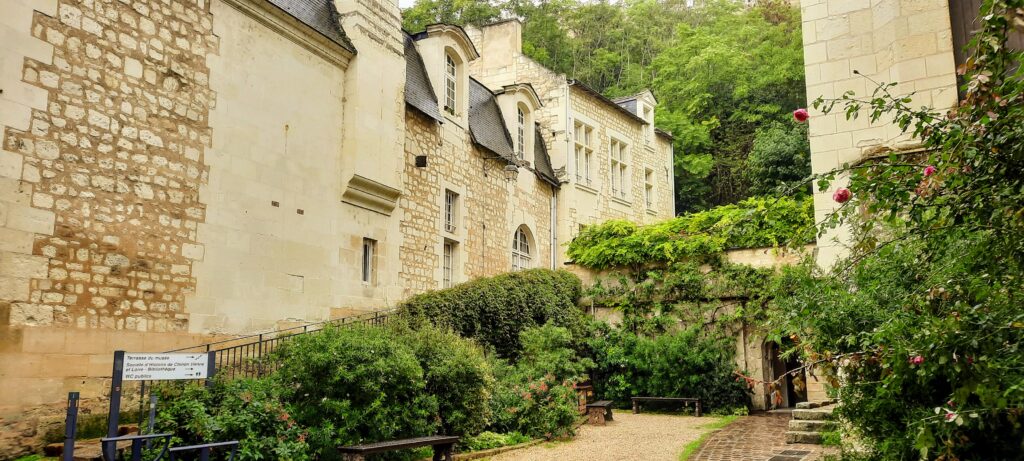
Chinon Castle Highlights
The Royal Fortress of Chinon consists of three castles: Fort Coudray, Middle Castle, and Fort Saint George and you can see some stunning views of the castle from across the river.

The Royal Quarters are located in the Middle Castle and these rooms were occupied by the Plantagenets and visited by Joan of Arc. The Royal Quarters are used for performances and museum exhibitions with one room devoted to the history of the fortress, with 3D reconstructions, scale models and archaeological collections taken from recent excavations.
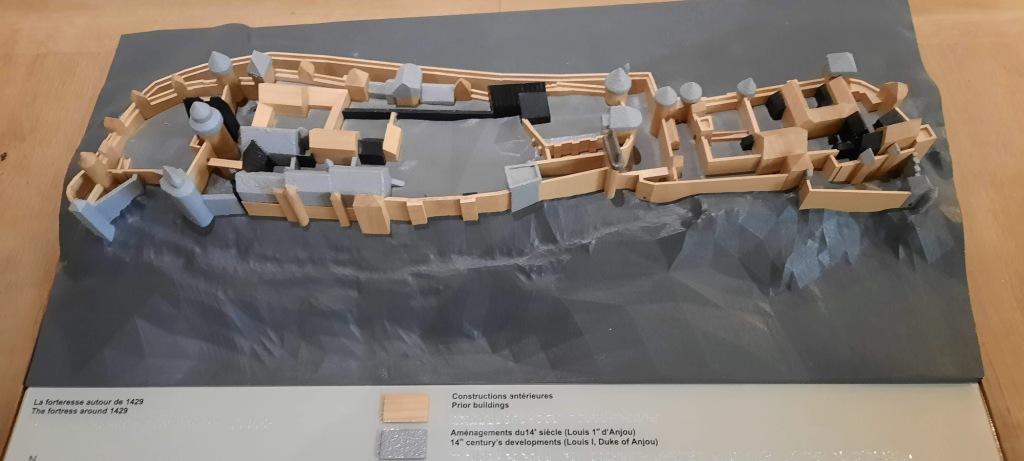
Chinon castle interior
Charles VII who was crowned, thanks to Joan of Arc, used Chinon as his residence and you can visit his chambers Royal Fortress of Chinon. Charles VII has two chambers, each with a bed and antechamber, where scenes from public and political life were played out and where the King gave audiences and received ambassadors.
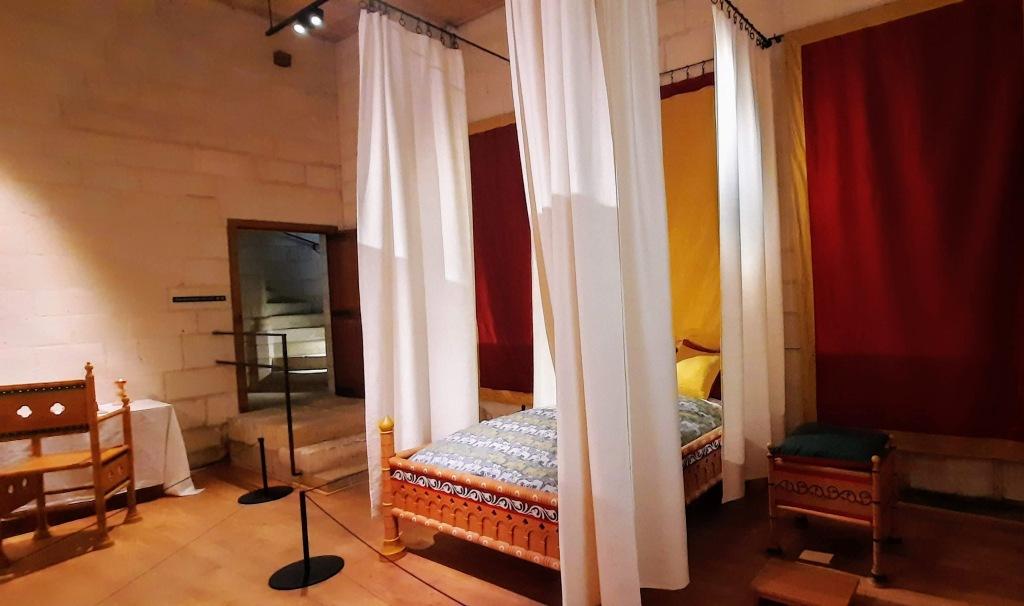
There is a room dedicated to Joan of Arc, with an exhibition of original artefacts from the 18th to 20th century (bronze statues, pottery, etc.).

Many of the other rooms are taken up with displays of armour, costumes and implements associated with TV shows and movies. These include Game of Thrones, The Hobbit, and Disney films such as Maleficent. Not really sure why unless it’s a ploy to bring in young people. They just didn’t work for us as we expected much more information about life in the middle ages. They seemed to be more fake disnification of history.
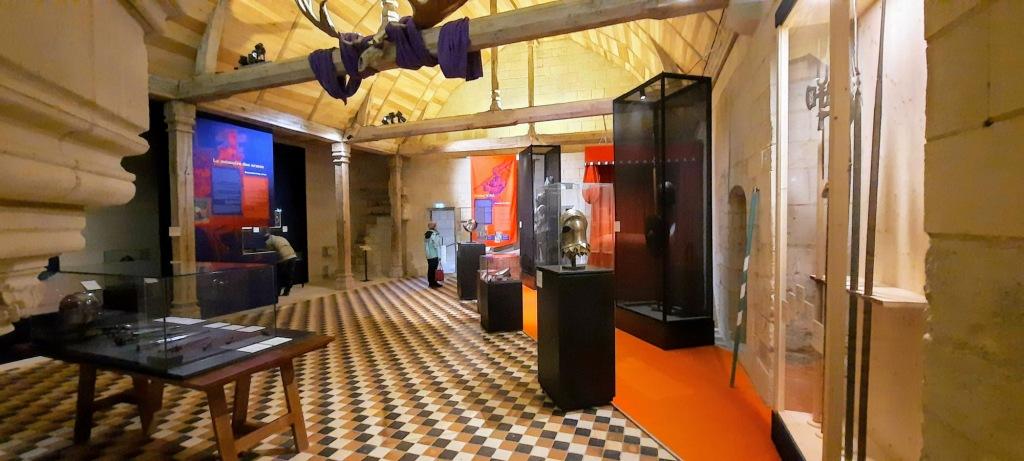
Several towers can be found across the courtyard in the Middle Castle. The Argenton Tower was constructed during the late 15th century. It has 5-metre thick walls and cannons were fitted into the structure to use the new gunpowder of the times.
The Clock Tower, which dates back to the 14th century, represents the most impressive tower of the castle. It serves as the entrance to the Middle Castle, over a drawbridge and through a portcullis. Its tall, slender shape makes it unlike other rounded towers popular in most castles. The five levels of the tower are accessible via a decorative spiral staircase.

Coudray Tower was built by Philippe Auguste after he captured the fortress from King John in 1205. Its name may have originated from the grove of hazelnut trees ‘courdres’ in old French. More than a century earlier, it was used to imprison the Crusaders of the Order of the Temple in 1308.
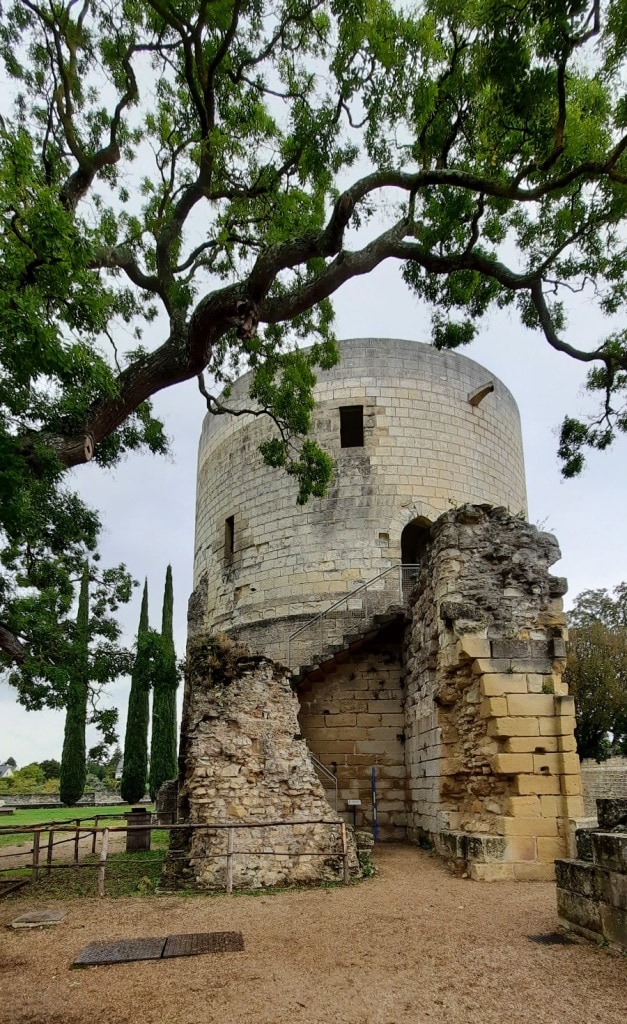
Used by Charles VII in the 15th century, the Château de Chinon became a prison in the second half of the 16th century, but then fell out of use and was left to decay. It has been recognised as a monument historique by the French Ministry of Culture since 1840. The castle, which contains a museum, is now owned and managed by the Indre-et-Loire General Council and is a major tourist attraction. It was restored in the early 21st century at a cost of 14.5 million euros.
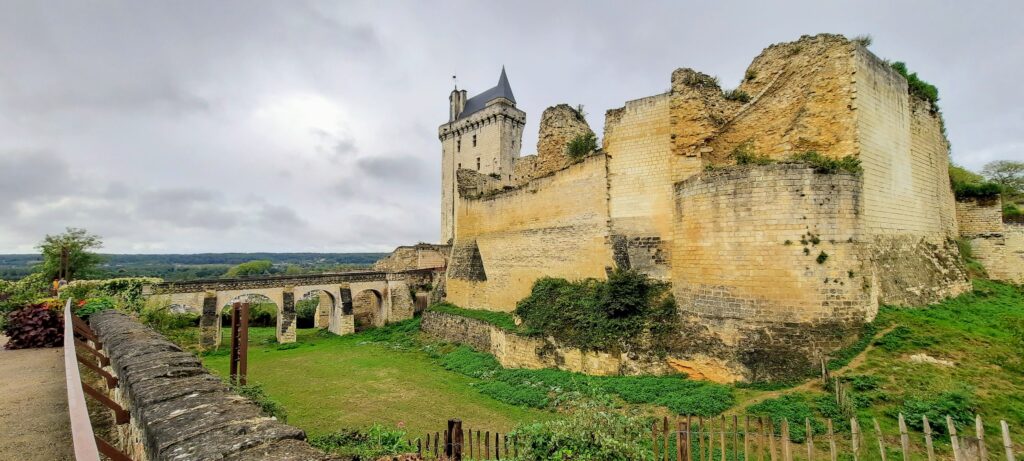
In 1631 it became part of the Duke of Richelieu’s estate but was left to ruin as the Duke didn’t want it to compete with his beautiful Château de Richelieu which was an enormous 17th-century château. Sadly this was demolished for building materials in 1805 and there is nothing left of it.

When the Revolution took place the religious buildings all fell neglected and the fortifications were pulled down in the 1820s.
Chinon Castle opening times
The Chateau de Chinon is open daily throughout the year, hours 9-6 in April-June and Sept., 9-7 in July-Aug., 9-5 in Oct., and 9-12 and 2-5 in Nov.-March. An adult ticket to the Fortress of Chinon costs €10.50.
The Town of Chinon
In Chinon, the winding streets up to the castle are lined with small shops, inns, and cafes. The town of Chinon became a Historic Preservation district in 1968 and since that time has undergone and continues to undergo significant restoration work to preserve its history.
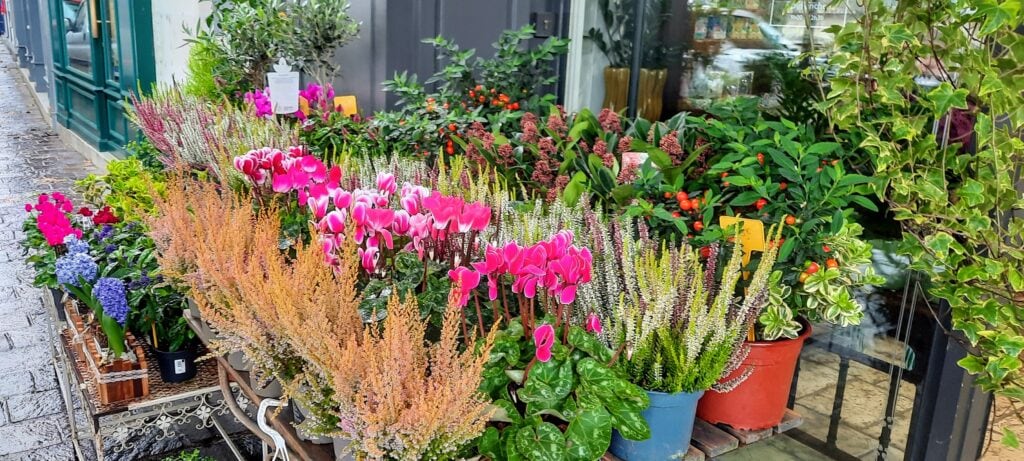
Along the streets below the castle walls are Troglodyte houses which are cave houses many of which are used by Vintners producing some of the best-known red wines in France.

It’s an easily walkable town and if you visit the Fortress of Chinon you can take a glass elevator down to the medieval centre. There are many shops, restaurants and cafes to enjoy in the town and if you park in Place General de Gaulle where there is a carpark you can access the elevator up to the Fortress which will save you a good climb. The tourist office also offers free walking tours during the summer season.
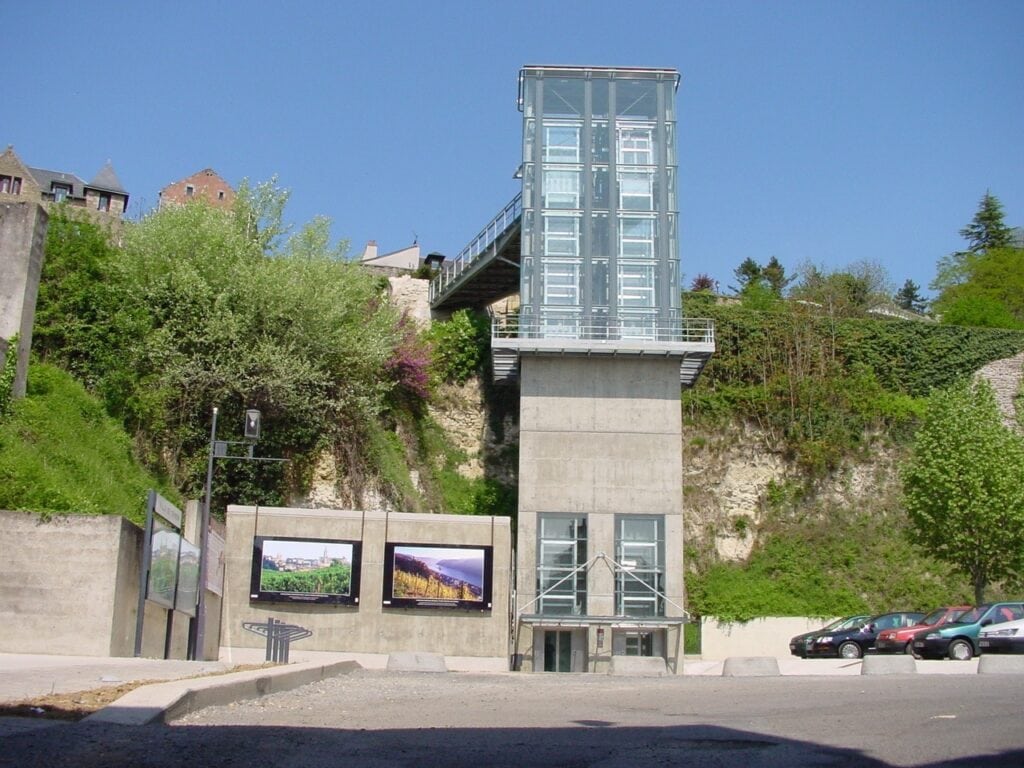
If you love a market and hunting for antiques check out the weekly market here on Sundays (morning) plus a monthly antique market (brocante) in the town on the third Sunday of the month.

Churches in Chinon
You will see several churches as you explore: the 12th century Church of Saint-Maurice is in the heart of the old town centre.
The most important monument in Chinon is the ruins of the 12th-century Collegiate Church Saint Mexme. Only a part of the church remains along with two towers as most were destroyed during the Revolution. Inside the church, there are some very early frescoes, and various exhibitions are held here during the summer.
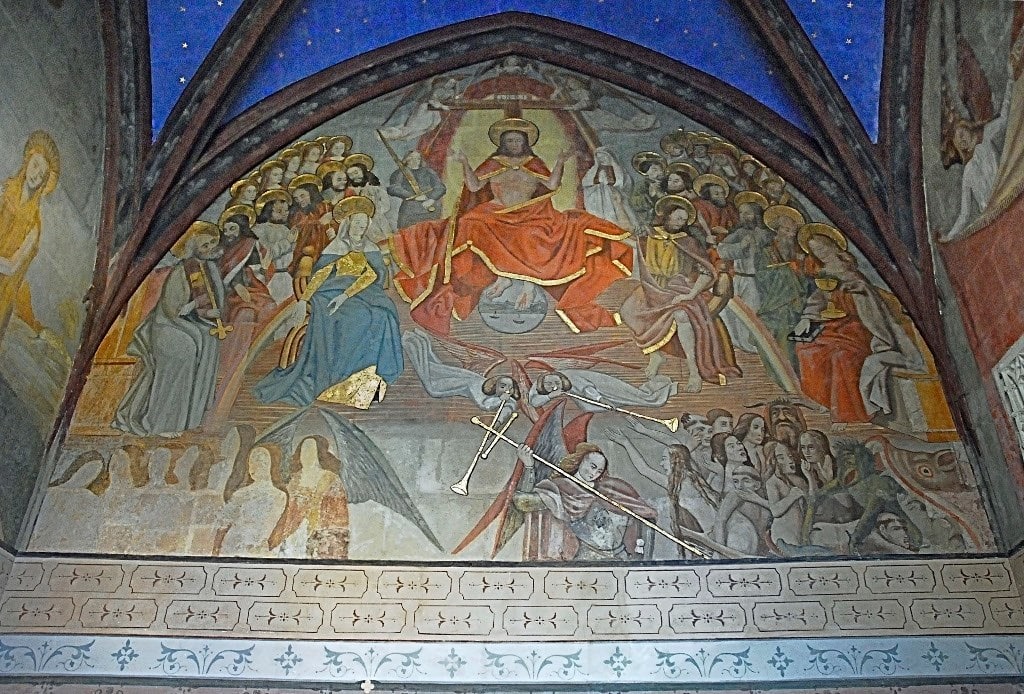
You can also visit the ancient troglodyte chapel of Saint-Radegonde in Chinon, half the building is built into the cliff and contains some medieval frescoes, although the chapel has limited opening hours and is outside the centre of Chinon so check the opening times before you go.
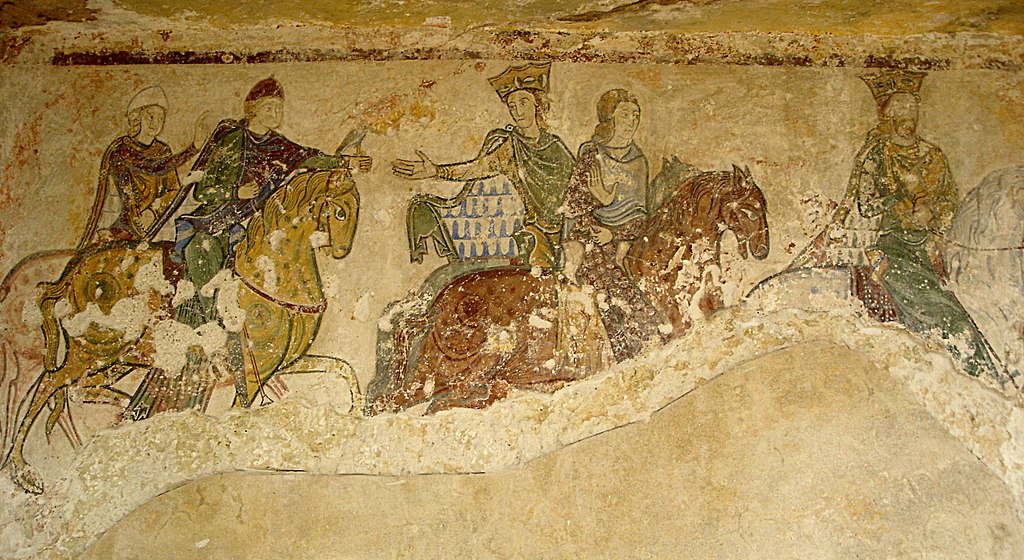
In the mural in Chapelle Sainte-Radegonde de Chinon the people depicted are traditionally thought to represent Eleanor of Aquitaine, Henry Plantagenet, and their children.
Chinon and François Rabelais
The Chinon region is the home country of Rabelais who was born in the late 15th century on a farm called La Devinière. He grew up here where his father was a lawyer in Chinon. The author found inspiration in the vineyards around La Devinière for his first novel Gargantua, and the area is known as La Rabelaisie.
La Devinière is 7 km away from Chinon and is listed as a historical monument. Rabelais’s birthplace is now a museum devoted to his life in France. Here you can visit the 15th-century house, a dovecot, and the caves for storing wine.

What to see around Chinon
To the south, you will find the village of Seuilly which is home to the Musée Rabelais. This museum is situated in La Devinière, the house where the writer was born.
A few kilometres away is Fontevraud Royal Abbey where Eleanor of Aquitaine, Richard the Lionheart, Isabelle of Anjou and King Henry II of England. Apparently, at one time Queen Victoria requested the return of the bodies but was refused. Besides, there are no bodies or ashes anymore as during the Revolution the bones were scattered to the winds.
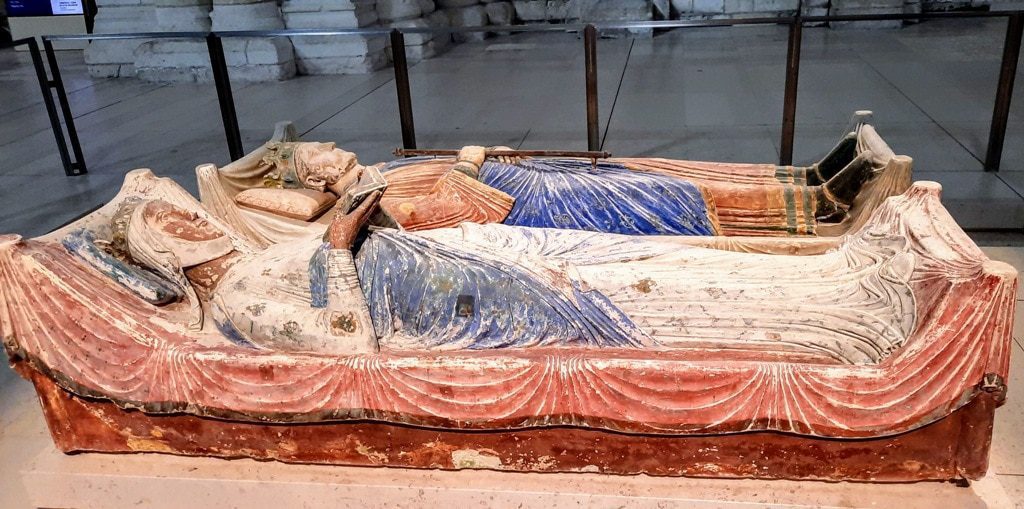
North of Chinon, you have to visit the Château d’Ussé, which inspired Charles Perrault to write his own version of the story of Sleeping Beauty.
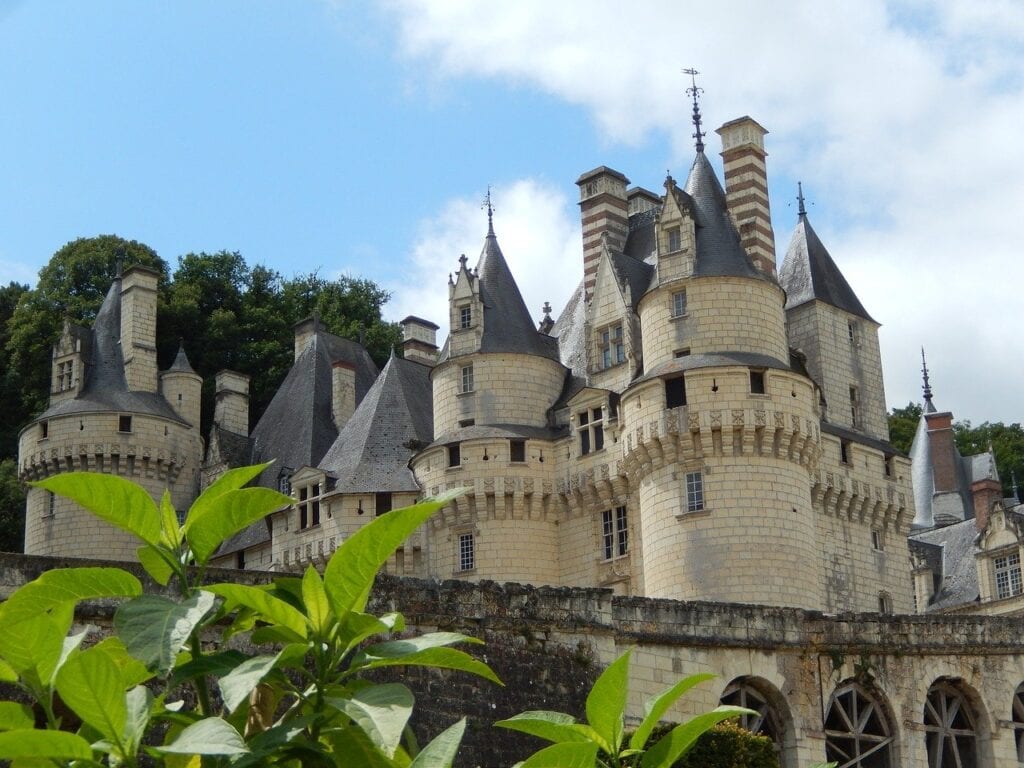
Chateau Azay-le-Rideau
Around 20 minutes from Chinon you will find the Château of Azay-le-Rideau situated on a small island on the Indre River, a tributary of the Loire River. One of its most famous architectural features is the ‘stairway of honour’ which leads directly up from the main entrance.
The Azay-le-Rideau Château was built in the reign of King Francis I by Gilles Berthelot (treasurer of France, and former counsellor to Louis XII). It combines the charm of early Renaissance architecture and is surrounded by a romantic 8-hectare park.
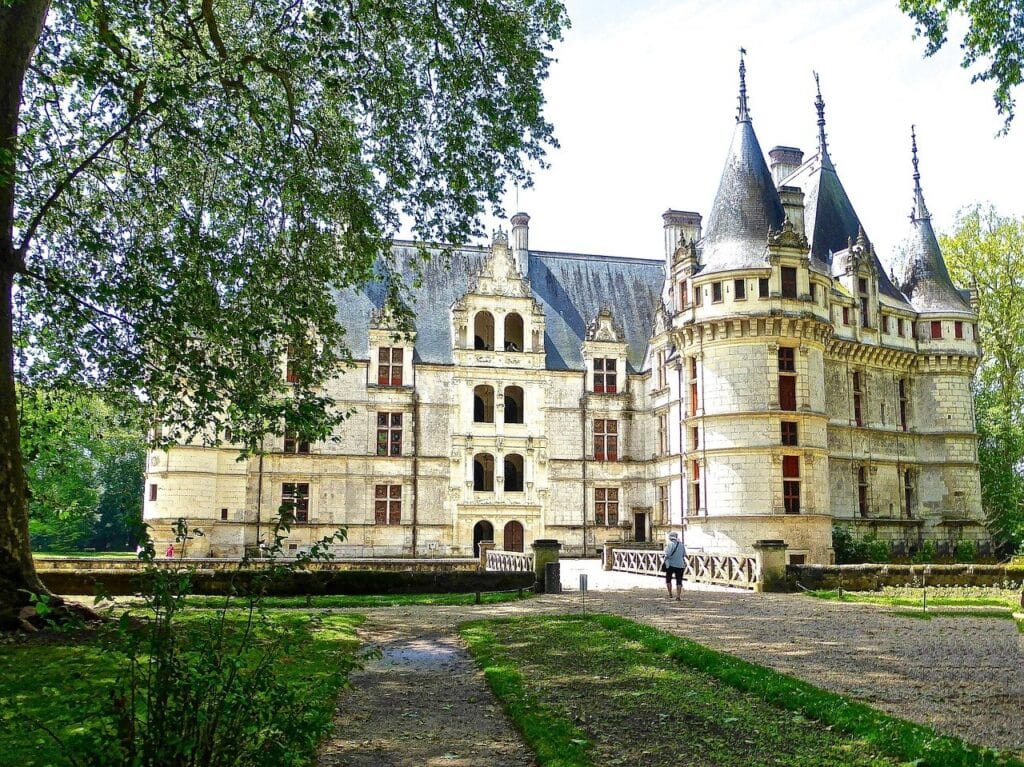
For those of us fascinated by medieval history and the connections between France and England, this area is an opportunity to step back in time to get a glimpse into our past. Have you visited this region of France and seen the Chinon Fortress yet?
If you love France you may also like to read these articles
Château de Josselin – A 1000 years of history in the heart of Brittany
14 Fabulous French Castles to visit
Chateau de Chenonceau the Château des Dames
Chateau Chambord – an awe-inspiring Renaissance Castle in France
Château du Clos Lucé – Da Vinci’s French Castle
Château Amboise-jewel of the French Renaissance
Pin it to save it
